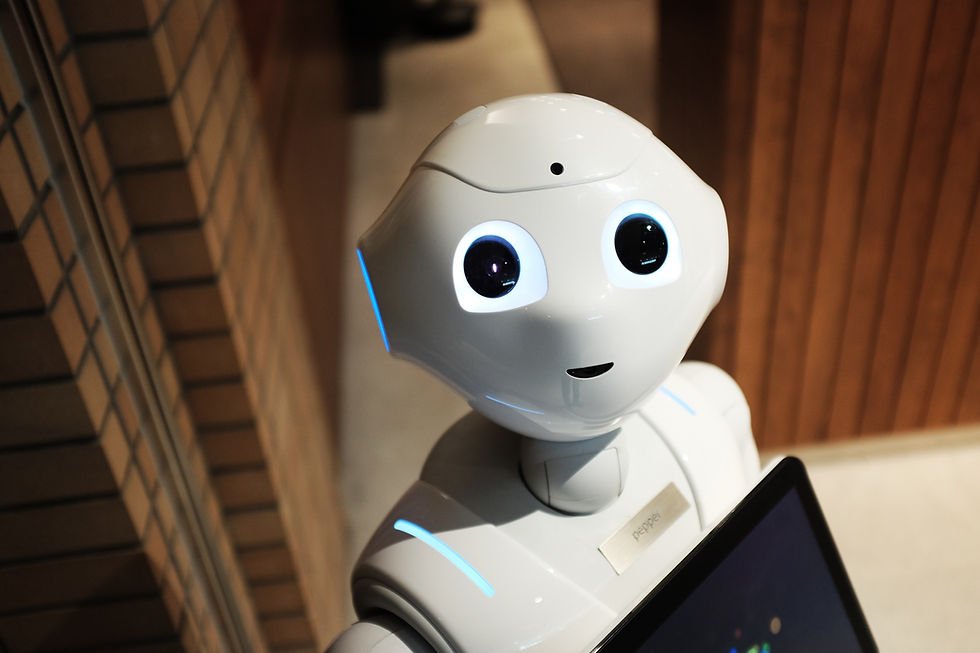Beyond “Green AI”: Rethinking Artificial Intelligence’s Ecological Paradox
- Yen Nguyen
- Oct 13
- 3 min read
Turquoise Jay
13-10-2025
As if recalling something, Zhuangzi says, “This morning I heard the birds in the Bird Village said that the last storm had swept away all the Flowerpeckers’ nests. They have no home now. Do you still want them to finish weaving your burrow’s rain-proof screen?”
Hearing Zhuangzi, Kingfisher sighs and closes his eyes as if meditating. Kingfisher suddenly realizes the wonder of Dao, of wu wei (無為).In Kingfisherish Wandering [1]

Artificial intelligence (AI) is often portrayed as both a savior and a saboteur of the environment — capable of combating climate change through smart systems and data analytics, yet also responsible for soaring energy demands and extractive infrastructure. In a recent article, Cellard, Parker, and Haines [2] analyze this paradox through the ancient Greek notion of the pharmakon — meaning both “remedy” and “poison” [3,4]. They argue that mainstream policy and industry discourses, such as those by the OECD, Green Software Foundation, and Microsoft, resolve this paradox by reducing AI’s environmental impact to its carbon footprint, leading to narrow, quantifiable fixes that preserve rather than question AI’s global expansion.
The study critiques the prevailing “Green AI” movement that focuses on measuring and optimizing energy efficiency in machine learning models [5,6]. While such efforts aim to reduce emissions, they risk ignoring broader ecological entanglements—the minerals, water, and labor involved in sustaining AI infrastructures. Instead of seeing AI as an external tool that impacts the environment, the authors highlight that AI is an environmental infrastructure, deeply embedded in global material, political, and social systems.
Drawing on science and technology studies (STS) scholar Andrew Barry’s work, the authors propose four methodological principles to reopen AI’s problem-space [7]:
Unpacking material entanglements between AI and ecologies along the supply chain;
Being sensible to geohistory, recognizing the local realities of energy grids and data centers;
Interrogating the lure of quantification, which obscures social and ethical questions;
Acknowledging heterogeneous actors across AI supply chains — from miners to coders to users.
This perspective aligns with Nature Quotient (NQ)—the human intelligence to perceive and act upon the interconnectedness between human systems and natural ecosystems [8]. Viewing AI through the NQ lens moves beyond mere carbon accounting toward relational awareness, where technology is neither a neutral instrument nor a universal cure. By encouraging plural, place-based, and participatory approaches, such thinking fosters individual and social peace: individuals cultivate mindful interaction with technology’s ecological roots, while societies develop policies that balance innovation with planetary well-being [9].
Ultimately, Cellard and colleagues call for the “art of the pharmakon”—the wisdom to live with technological ambivalence rather than erasing it. Recognizing AI’s dual nature can transform the environmental governance of digital infrastructures into a pathway toward a more peaceful coexistence with Earth’s living systems.
References
[1] Nguyen MH. (2025). Kingfisherish Wandering. https://www.amazon.com/dp/B0FVLLLXNW/
[2] Cellard L, Parker C, Haines F. (2025). Beyond AI as an environmental pharmakon: Principles for reopening the problem-space of machine learning's carbon footprint. Environment and Planning E: Nature and Space, 8(3), 1020-1045. https://doi.org/10.1177/25148486251332087
[3] Kemper J. (2022). The environment and frictionless technology. Media Theory, 6(2), 55-76. https://doi.org/10.70064/mt.v6i2.863
[4] Stiegler B. (2013). What Makes Life Worth Living: On Pharmacology. Cambridge: Polity Press.
[5] Schwartz R, et al. (2020). Green AI. Communications of the ACM, 63(12), 54-63. https://doi.org/10.1145/3381831
[6] Kaack LH, et al. (2022) Aligning artificial intelligence with climate change mitigation. Nature Climate Change, 12, 518-527. https://doi.org/10.1038/s41558-022-01377-7
[7] Barry A. (2021). What is an environmental problem? Theory, Culture & Society, 38(2), 93-117. https://doi.org/10.1177/0263276420958043
[8] Vuong QH, Nguyen MH. (2025). On Nature Quotient. Pacific Conservation Biology, 31, PC25028. https://doi.org/10.1071/PC25028
[9] Nguyen MH, Ho MT, La VP. (2025). On “An” (安): Inner peace through uncertainty, nature quotient, and harmony with Dao. http://books.google.com/books/about?id=NIKMEQAAQBAJ




Comments